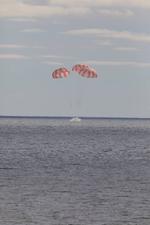Other

“NEO Surveyor is the first purpose-built space telescope that will advance NASA’s planetary defense efforts by finding and tracking hazardous near-Earth objects. A space telescope designed to search for the hardest-to-find asteroids and comets that stray into Earth’s …

“Cube-shaped snow, icy landscapes, and frost are all part of the Red Planet’s coldest season. When winter comes to Mars, the surface is transformed into a truly otherworldly holiday scene. Snow, ice, and frost accompany the season’s sub-zero …
News SpaceX launches 54 upgraded Starlink internet satellites and nails rocket landing at sea in 60th flight of the year

“SpaceX launched the first batch of a new generation of Starlink satellites into orbit early Wednesday (Dec. 28) and nailed a rocket landing at sea to mark a record 60th flight of the year. A Falcon 9 rocket topped with …

“The Surface Water and Ocean Topography (SWOT) satellite launched into Earth orbit on Friday, Dec. 16, from Vandenberg Space Force Base in central California, and engineers are working to prepare the mission to begin measuring the height of water on …

“The Vega C was carrying two spacecraft for Airbus’ Pléiades Neo Earth-imaging constellation. The second mission of Europe’s new Vega C rocket did not go according to plan. The medium-lift Vega C lifted off from Europe’s Spaceport in …

“The mission has concluded that the solar-powered lander has run out of energy after more than four years on the Red Planet. NASA’s InSight mission has ended after more than four years of collecting unique science on Mars. Mission …

“Filled with rock, the sample tube will be one of 10 forming a depot of tubes that could be considered for a journey to Earth by the Mars Sample Return campaign. A titanium tube containing a rock sample is resting …

“NASA’s Eyes on the Solar System web-based visualization tool lets you “see” the SmallSat as it journeys to the Moon and seeks out water ice in the darkest craters there. NASA’s Lunar Flashlight has communicated with mission controllers …

“NASA’s Orion spacecraft splashed down in the Pacific Ocean, west of Baja California, at 9:40 a.m. PST Sunday after a record-breaking mission, traveling more than 1.4 million miles on a path around the Moon and returning …

“Though the telescopes can’t directly observe the planets’ surfaces, their densities indicate they’re lighter than rock worlds but heavier than gas-dominated ones. A team led by of researchers at the University of Montreal has found evidence that two …
